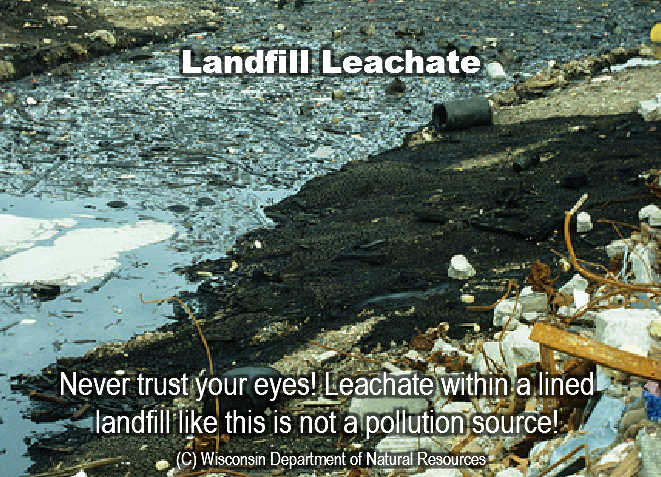
In this summary of news stories, leachate pollution continues to produce headlines in the US, and this time it is an old landfill that seems to be producing contamination of a river.
Those that understand leachate will not be surprised that an old landfill continues to give leachate problems. Due to the low water infiltration rates of more recent landfill designs, it may take hundreds of years before most landfills even receive a rainwater "flushing" equal to a single bed depth of water. In order to wash through the majority of contaminants will take 10 to 100 bed depths of rainfall, so the public should think of that and keep a watch on all landfills for a long time after they have been closed and capped.
The report to which I refer can be accessed by following the link below:
Environmental watchdog reports old landfill leachate - Mid-Hudson News
"Mid-Hudson News: Environmental watchdog reports old landfill leachate. GOSHEN – Environmental watchdog Susan Cleaver of Goshen has discovered what she believes to be leachate from the Orange County Landfill in the Cheechunk Canal. She has reported it to state environmental officials and county leaders. Cleaver, who ..." http://news.google.com/news/url?sa=t&fd=R&ct2=us&usg=AFQjCNEnN4hIIVeXBfc6RSMYkk7a1ogpKA&clid=c3a7d30bb8a4878e06b80cf16b898331&ei=vnQUVPCGN42YjAbq44H4DA&url=http://www.midhudsonnews.com/News/2014/September/10/OC_Lndfl_leach-10Sep14.htmlThat's not the only news though, and some are much more positive. I particularly liked the item below:
Leachate treatment system works - West Central Tribune
"West Central TribuneLeachate treatment system worksWest Central TribuneAnd the process is more environmentally sound than the county's current system of trucking leachate to Willmar's wastewater treatment facility. On top of that, they said the technology will save the county $3 million over the next 20 years. The board ..." http://news.google.com/news/url?sa=t&fd=R&ct2=us&usg=AFQjCNE5lzDBiMTqnH4fIAYuxb_gfNI6yw&clid=c3a7d30bb8a4878e06b80cf16b898331&ei=vnQUVPCGN42YjAbq44H4DA&url=http://www.wctrib.com/content/leachate-treatment-system-worksYes. I like to read about success. Why are we surprised that a leachate treatment system works...
The author does not say what the "filtering system" is but I guess it is a Reverse Osmosis (RO) Plant. If so, it is the same as any filter. Whatever is caught up on the filter has to go somewhere! So, RO might be "green", but what happens to the material that is left on the filter? Where soes that get treated. If it is sent back inot the landfill I really don't consider that to be green as it is just returning the pollutants to the same place it leaked from in the first place! The question then is just, how long before it comes out again?
Finally, we are back into bad news with a money problem. It looks as if the environment is in for a bashing if no money can be found to deal with this leachate in future. Maybe, we have come full circle here to the start of this article. So, often regulators and landfill operators just fail to understand just what a long-term problem landfill leachate can be...
Landfill broke; Money to treat leachate at NABORS runs out - Harrison Daily
"Landfill broke; Money to treat leachate at NABORS runs outHarrison DailyMelinda Caldwell, executive director of the Ozark Mountain Solid Waste District, said the day for which the Board of Directors has been preparing finally arrived: The district is out of money to operate NABORS Landfill. kAm%96 7:?2?4:2==J EC@F3=65 ..." http://news.google.com/news/url?sa=t&fd=R&ct2=us&usg=AFQjCNFl-InOQVKRivZI7BT45aK9Uh7NZQ&clid=c3a7d30bb8a4878e06b80cf16b898331&ei=vnQUVPCGN42YjAbq44H4DA&url=http://harrisondaily.com/news/landfill-broke-money-to-treat-leachate-at-nabors-runs-out/article_ca8d3ca4-1c1f-11e4-ab79-0019bb2963f4.html



